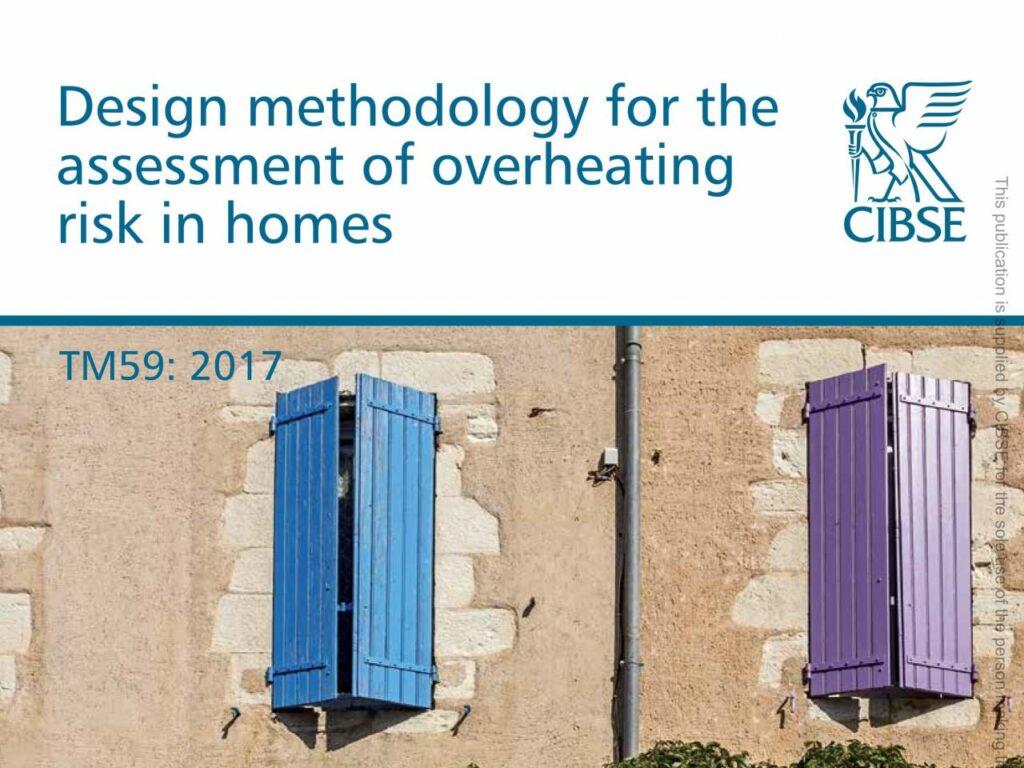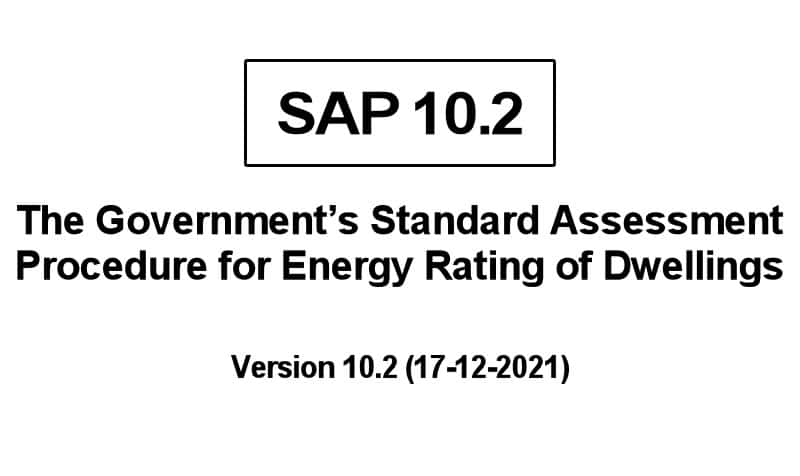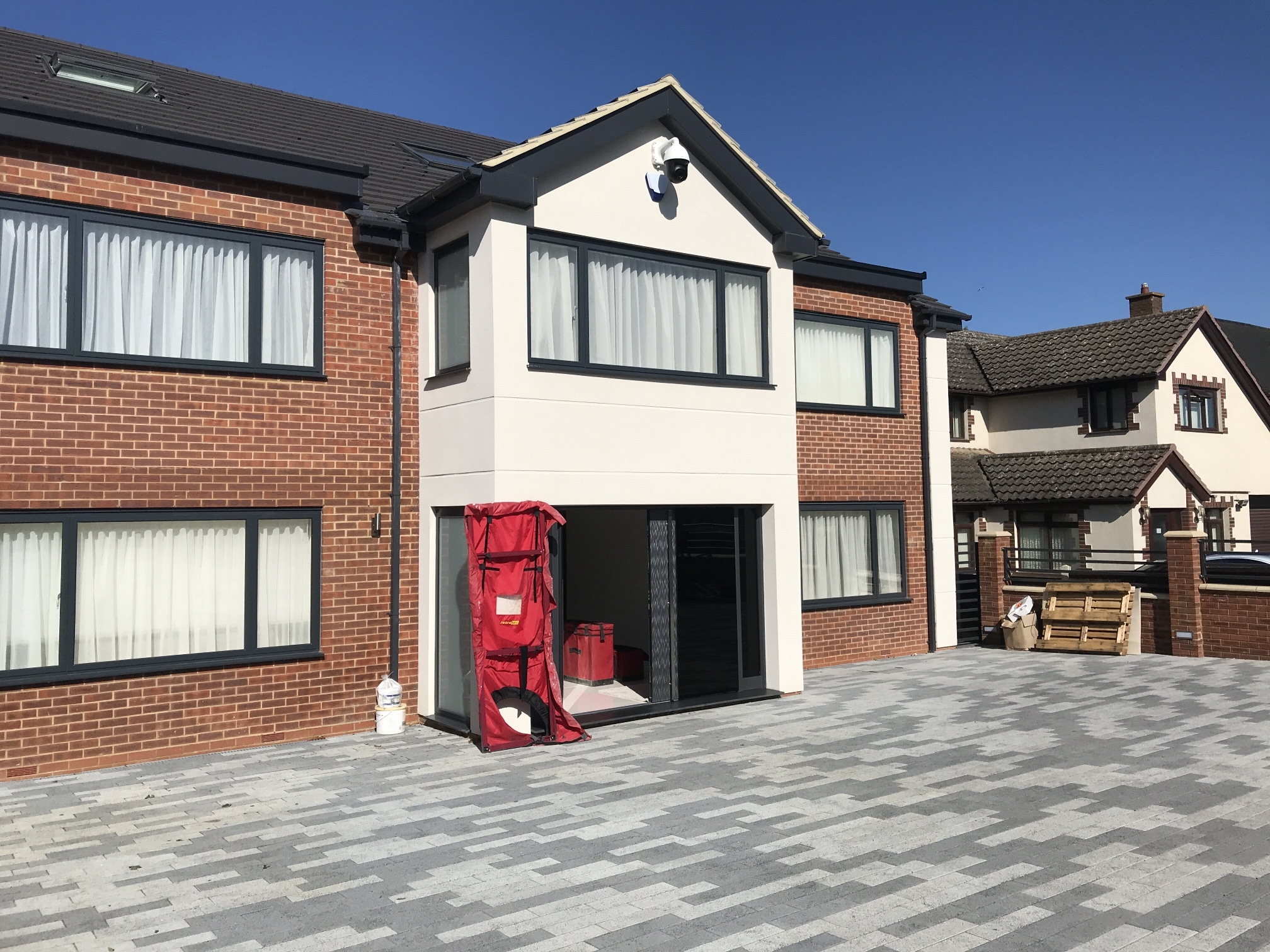The government has now responded to the Future Building Standards consultation, confirming the standards and compliance metrics, adopted as part of the changes to Approved Document L1A. These changes were issued on 15th December 2021 and will come into effect on 15th June 2022 with a transition for dwellings started to June 2023.
This would be the time that panic would set in, but Briary Energy are here to help you through the changes to make the transition as smooth and cost effective as possible.
Transitional arrangements in practice
- For transitional arrangements to apply to an individual building, developers will need to both:
- Submit a building / initial notice or deposited plans by June 2022; and
- Commence work on each individual building by June 2023.
- Where notices or plans are submitted after June 2022, transitional arrangements will not apply and homes must be built in line with 2021 Part L standards.
- Where notices or plans are submitted before June 2022, but work on any individual building does not commence by June 2023, the un-commenced buildings must build in line with 2021 Part L standards.
- No individual building will need to change once building work has commenced, in line with the definition on commencement below, as long as work commences within the reasonable period. However, developers will need to plan their sites appropriately and if work on a building commences outside of the reasonable period, they will need to ensure that it is compliant with new standards.
- For the purposes of transition, commencement will not change from the existing 2013 definitions:
- Excavation for strip or trench foundations or for pad footings.
- Digging out and preparation of ground for raft foundations.
- Vibro-floatation (stone columns) piling, boring for piles or pile driving.
- Drainage work specific to the building(s) concerned.
- 31% uplift in Co2 over the 2013 regulations, FEES tightened and Primary Energy Rate introduced.
- The target primary energy rate, in kWhPE/m2 per year: this is influenced by the fabric and fuel.
- The target emission rate, in kgCO2/m2 per year: this is influenced by the fabric and fuel.
- The target fabric energy efficiency rate, in kWh/m2 per year: this is influenced by the fabric only
- Work on clear and concise information at the as built stage for BCBs and homeowners with a signed copy of the Buildings Regulations Compliance Report (BREL) and photographic evidence of the build quality should be provided to the homeowner.
- Proven continuity of insulation both at design stage and as built stage
- Local authorities will continue to be able to set standards above minimum Building Regulation standards.
- Airtightness Test for all homes to be mandatory – no average permitted.
- Pulse introduced as an approved airtightness testing method.
- Adoption of an ‘independent’ approved airtightness testing methodology, which will be CIBSE TM23.
- Full lighting designs will need to be provided for SAP to account for the efficacy of lamps installed in the fixed lighting locations
- 25a Regulation from the 2010 BR stays as a requirement
- New guidance around thermal bridging requirements
- Transition arrangements relate to per plot not per site
- Approved Document O – risk of overheating – 2 methods of compliance – Simplified method and Cibse TM59 – Simplified method has restrictions – more information on our website www.briaryenergy.co.uk
- Solutions need to take into account, Noise, Pollution, Security, protection from falling and protection from entrapment
SAP 10.2
SAP software providers will be required to provide approved software before the implementation date of the new regulations, i.e 15th June 2022.
We have been informed that testing versions may be available in February.
Notable Changes from SAP 2012
Appendix G: Flue gas heat recovery systems, Waste water heat recovery systems and PV
Combination of FGHRS, WWHRS, PV diverter and solar water heating
The savings from FGHRS, WWHRS, PV diverter and solar water heating interact. When two or more of these items are present the calculations must be done in the following order:
- WWHRS;
- PV diverter;
- Solar water heating, allowing for the WWHRS in worksheet
- FGHRS, allowing for the WWHRS saving, the PV diverter input and the solar input in equations
Essentially this means that WWHR takes precedent when any two of the above are installed – the software will do this automatically.
Note that when the water heating is provided by a combined heat pump and boiler package (Hybrid Heat Pump), the FGHRS saving should be applied only to the part of the hot water demand that is satisfied by the boiler.
PV Diverters
Requirements need to be input to create benefit in SAP
- For optimum performance, hot water cylinders may be larger than typical practice (greater than the average daily use)
- No Solar water heating system present
- No Battery storage present
- Such energy is surplus to the instantaneous electrical demand of the dwelling and would otherwise be exported to the electricity grid.
Showers
Number of showers and flow rates including Electric Shower power rating are to be input – include number of baths
Implications:
Appendix G
Waste water Heat Recovery would need to be considered First. The PV Diverter option would come after and be based on cylinder size and availabilty of excess PV requirement for the dwelling.
PV diverters have specific requirements which must be considered
Electric showers are now included and will be detrimental to the overall SAP result – power rating is used not flow rate.
Flue Gas Heat Recovery is considered only after any benefit from WWHR, PV diverter and Solar thermal.
Thermal Bridging (non-repeating) Appendix K
There are 4 options for specifying the thermal bridging in SAP:
1) Details from a government-approved source involving independent assessment of the construction method of junctions and provision of psi-values for that junction.
2) Details from a reputable non-government database containing independently assessed thermal junction details.
3) Using psi-values calculated by a person with suitable expertise and experience using the guidance set out in BR 497, and BRE IP 1/06.
4) If none of the above applies use equation (K2), with y = 0.20 W/m²K.
If using Table K1 then it must be the default column, which will produce a considerably worse result than if using psi-values calculated by a person with suitable expertise and experience using the guidance set out in BR 497, and BRE IP 1/06.
Additional Room in Roof junctions added to cover those not listed – R10 and R11
Appendix L: Energy for lighting and electrical appliances
Where it is not possible to obtain the efficacy of fixed lighting from manufacturer’s data, values from Table L1 should be used – similar to using table K1 for thermal bridging, lighting designs would give a better result in SAP
Emission factors
Changes to the emission factors from SAP 2012 to SAP 10.2
| SAP 10.2 | SAP 2012 | |
|---|---|---|
| Mains Gas | 0.210 | 0.216 |
| Bulk LPG | 0.241 | 0.241 |
| Biogas | 0.024 | 0.098 |
| Heating Oil | 0.298 | 0.298 |
| Wood Logs | 0.028 | 0.019 |
| Electricity | 0.136 | 0.519 |
Heating Patterns
Changes to the heating patterns calculation from SAP 2012 to SAP 10.2 – to show a consistent daily heating pattern for all days of the week
Air Tightness
Maximum of 8.0m3/(h-m2)@50Pa – reduced from 10 m3/(h-m2) or 1.57m3/(h·m2) @ 4Pa if using the Pulse system of testing.
Limiting U-values and Notional Dwelling
The notional dwelling is just one example of how to achieve compliance for a typical home as this dwelling sets the Target for all three criteria. In effect it outlines a ‘recipe’ for fabric specification; U-values for the walls, roof, floors, windows and doors, as well as parameters for thermal bridging, air permeability and heating design. Building to the notional dwelling would mean the dwelling will pass, however, it is not the only way, or indeed the best way. Most housebuilders are unlikely to find it is the most cost-effective route to compliance these values are not the limiting u-values – To correctly assess whether an element meets the limiting U-value, the U-value must be calculated for the element in the appropriate plane – either horizontal or vertical. For windows and roof windows, U-values should be calculated based on a vertical position. For rooflights, U-values should be calculated based on a horizontal position. If the data available for the element is in the incorrect plane, it should be adjusted according to the guidance in BR 443.
| Fabric Elements | limiting u-values | notional dwelling |
|---|---|---|
| All roof types | 0.16 | 0.11 |
| Wall | 0.26 | 0.18 |
| Floor | 0.18 | 0.13 |
| Party wall | 0.20 | 0 |
| Window | 1.60 | 1.20 |
| Rooflight | 2.20 | 1.70 |
| Door | 1.60 | 1.00 |
| Air Permeability | 8.00 | 5.00 |
Implications:
Thermal Bridging – Using just appendix K figures will produce a poor SAP result.
Default for not using details has been moved from 0.15 W/m²K to 0.20 W/m²K effectively meaning psi calculations are a must.
Lighting designs are essential and using Table L1 would mean the overall result would be poorer.
Emission factor changes mean that non Direct acting electric heating systems are beneficial ( ie. Air source heat pump) – however direct acting electric systems such as panel heaters and electric boilers would be penalised in the Primary Energy Rate calculation).
Heating pattern changes would possibly improve the result to make it more accurate.
All plots to be tested for Air Tightness no average testing results allowed – maximum result is now 8.0m3/(h-m2)@50Pa.
Air pressure tests should be performed following the guidance in the approved airtightness testing methodology, CIBSE’s TM23
Continuity of insulation and Thermal bridging
Ensure the insulation layer is continuous, buildable and robust.
Before elements are concealed by subsequent work, an on-site audit should be undertaken to confirm that the designed details have been constructed. Photographs of the details should be taken in line with the guidance for the BREL report –
Briary Energy have developed an App for this for both Android and IOS.
BREL report – The Briary Energy BREL App
Our app will allow photographs to be taken and stored site and plot specific on our dedicated servers via the Android or IOS app
The Buildings Regulations England Part L (BREL) report and photographic evidence should be provided to the building control body and to the building owner to show that building work complies with energy efficiency requirements.
SAP 10 will produce the BREL report for the building as a standard output option.
The as-built BREL report should be signed by the person carrying out the SAP assessment to confirm that the as-built calculations are accurate and that the supporting documentary evidence and photographs have been reviewed
The as-built BREL report should be signed by the developer to confirm that the dwelling has been constructed or completed according to the specifications in the report.
- Foundations/substructure and ground floor, to show thermal continuity and quality of insulation in the following places.
-At ground floor perimeter edge insulation.
-At external door threshold.
-Below damp-proof course on external walls. - External walls: for each main wall type, to show thermal continuity and quality of insulation for the following.
-Ground floor to wall junction.
-Structural penetrating elements. - Roof: for each main roof type, to show thermal continuity and quality of insulation at the following.
-Joist/rafter level.
-Eaves and gable edges. - Openings: for each opening type (one image per wall or roof type is sufficient), to show thermal continuity and quality of insulation with photographs of the following.
-Window positioning in relation to cavity closer or insulation line.
-External door set positioning in relation to cavity closer or insulation line - Airtightness: additional photographs for all details 1–4 to show airtightness details (only if not included or visible in continuity of insulation image).
- Building services: for all plant associated with space heating, hot water, ventilation and low or zero carbon technology equipment within or on the building, show the following.
-Plant/equipment identification label(s), including make/model and serial number.
-Primary pipework continuity of insulation.
-Mechanical ventilation ductwork continuity of insulation (for duct sections outside the thermal envelope).
Photographs should be digital and of sufficient quality and high enough resolution to allow a qualitative audit of the subject detail. Close-up photographs may be needed where a long shot image provides insufficient detail. More than one image of each detail may be needed. Geolocation should be enabled to confirm the location, date and time of each image.
Approved Document O
This has potential for confusion, on our website there is a tool to determine if you require a TM59 Calculation.
Overheating
There are two methods to meet compliance:
Simplified method
For the simplified method, the buildings overheating risk category is determined by its location in one of the following areas and selected according to location and whether it has cross ventilation:
- ‘Moderate risk – England, excluding high risk parts of London
- ‘High Risk’ – urban and some suburban parts of London and Manchester.
Category A & B
To determine what group the dwelling or each residential unit, communal area and communal corridor belongs to, the following applies.
Group A, that have both of the following characteristics.
- More than two fabric elements
- Openings on opposite facades, allowing for cross ventilation.
(NOTE: Most dwellinghouses are within group A.)
Group B, that have both of the following characteristics eg. corner apartment
- Two or fewer fabric elements
- Openings on facades which are not opposite.
Limiting Solar Gains
If the simplified method is to be followed the following standards should be followed to limit solar gains:
- The maximum glazing area of the building or part of the building should be determined using the orientation of the façade that has the largest area of glazing.
- The maximum glazing area of the most glazed room should be determined using the orientation of the façade that has the largest area of glazing.
- Shading for buildings in the high risk location.
Residential buildings in the high risk location should, in addition to following the maximum glazing areas, provide shading for glazed areas between compass points north-east and north-west via the south. Shading should be provided by one of the following means.
- External shutters with means of ventilation.
- Glazing with a maximum g-value of 0.4 and a minimum light transmittance of 0.7.
- Overhangs with 50 degrees altitude cut-off on due south-facing façades only.
Removing Excess Heat
Buildings or parts of buildings with cross-ventilation should equal or exceed the minimum free areas in Table 1.3 of the regulations.
Openings should be designed to achieve the free areas, the equivalent area of the opening should be assessed by either of the following means.
- Measurement of the product to BS EN 13141-1.
- Calculation using Appendix D from PART O
NOTE: A system for purge ventilation should be provided in each habitable room to demonstrate compliance with Part F of the Building Regulations.
The simplified method is not suitable for buildings with more than one residential unit which use a communal heating or hot water system with significant amounts of horizontal heating or hot water distribution pipework. Main distribution routes should be through vertical risers to minimise heat gains into common spaces.
If external noise is an issue, it is unlikely that windows would be opened by an occupant and therefore the minimum free areas of the simplified method cannot be met and the Dynamic simulation model would need to be used.
Dynamic Thermal Modelling
Cibse TM59
The methodology is suitable for all residential buildings. It may offer the designer additional design flexibility over the simplified method in the following situations:
- Residential buildings with very high levels of insulation and airtightness.
- Residential buildings with specific site conditions that mean the building is not well represented by the two locations in moderate and high risk areas . NOTE: Local microclimates may not be well reflected by the geographically closest weather file.
- Residential buildings that are highly shaded by neighbouring properties, structures or landscape.

Acceptable strategies for reducing overheating risk
Limiting solar gains.
Solar gains in summer should be limited by any of the following means.
- Fixed shading devices, comprising any of the following.
- Shutters.
- External blinds.
iii. Overhangs.
- Awnings.
- Glazing design, involving any of the following solutions.
- Size.
- Orientation.
iii. g-value.
- Depth of the window reveal.
- Building design – for example, the placement of balconies.
- Shading provided by adjacent permanent buildings, structures or landscaping
Although internal blinds and curtains and foliage, such as tree cover, provide some reduction in solar gains, they should not be taken into account when considering whether requirement has been met.
The building should be constructed to meet requirement to remove excess heat using passive means as far as reasonably practicable.
It should be demonstrated to the building control body that all practicable passive means of limiting unwanted solar gains and removing excess heat have been used first before adopting mechanical cooling.
Any mechanical cooling (air-conditioning) is expected to be used only where requirement to remove excess heat cannot be met using openings.
Ensuring the overheating mitigation strategy is usable
Noise
In locations where external noise may be an issue (eg, where the local planning authority considered external noise to be an issue at the planning stage), the overheating mitigation strategy should take account of the likelihood that windows will be closed during sleeping hours (11pm to 7am).
Windows are likely to be closed during sleeping hours if noise within bedrooms exceeds the following limits.
- 40dB LAeq,T, averaged over 8 hours (between 11pm and 7am).
- 55dB LAFmax, more than 10 times a night (between 11pm and 7am).
Pollution
Buildings located near to significant local pollution sources should be designed to minimise the intake of external air pollutants.
Security
When determining the free area available for ventilation during sleeping hours, only the proportion of openings that can be opened securely should be considered to provide useful ventilation – opening vulnerable to intrusion
- Ground floor bedrooms.
- Easily accessible bedrooms.
Open windows or doors can be made secure by using any of the following.
- Fixed or lockable louvred shutters.
- Fixed or lockable window grilles or railings.
Protection from falling
Openings which are intended to be open for long periods to reduce overheating risk might pose a higher risk of falls from height. Only the proportion of openings which can be opened with a very low risk of occupants falling from height should be considered to form part of the overheating mitigation strategy.
Openings that can be opened wider than 100mm may form part of the overheating mitigation strategy where they meet all of the following conditions.
Protection from entrapment
Louvered shutters, window railings and ventilation grilles should not allow body parts to become trapped. They should comply with all of the following.
- Not allow the passage of a 100mm diameter sphere.
- Any hole which allows the passage of an 8mm diameter rod should also allow the passage of a 25mm diameter rod. Such holes should not taper in a way that allows finger entrapment.
- Any looped cords must be fitted with child safety devices.
Providing information
Sufficient information about the overheating mitigation strategy and its maintenance requirements must be given to owners so that it can be used effectively. The information should be provided in a clear manner, for a non-technical audience.
The following information should be provided, where relevant.
- The overall overheating mitigation strategy. Examples of possible strategies are given below.
-Appropriately sized windows that do not let in too much direct sun, and therefore increase the internal temperature, but which open fully to allow cool air in.
-Roller shutters with ventilation louvres. - The location of each element of the overheating mitigation strategy.
- Instructions for the operation of each element of the overheating mitigation strategy.
- The time of day that different parts of the strategy should be used. For example, the shutters should be used in the day and the windows opened only when it is cooler outside.
- The time of year when the strategy should be used. For example, all summer from May to September or only in hot weather.
- Manufacturer’s contact details.
- The location of controls and instructions for setting of controls, e.g. timer controls.
- The location of sensors and how to recalibrate them.
- Cleaning and maintenance instructions.
Home User Guide
A Home User Guide should be provided for new dwellings as described in Section 9 of Approved Document L, Volume 1: Dwellings. The Home User Guide should contain a section on ‘Staying cool in hot weather’, which provides non-technical advice on how to keep the dwelling cool in hot weather. The information in the above section should be provided in this section of the Home User Guide.






